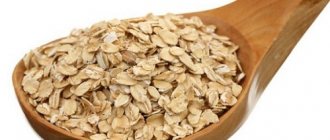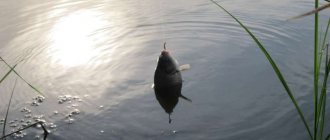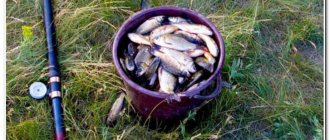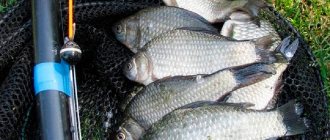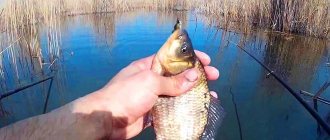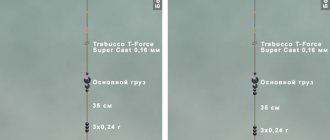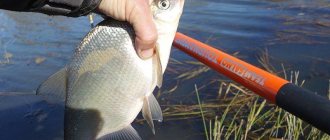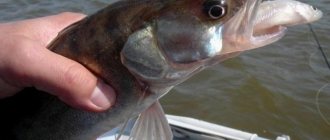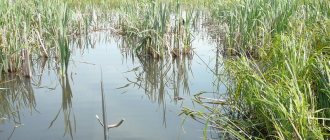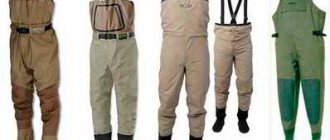Habitats of crucian carp
Crucian carp is a hardy fish; in terms of vitality it can be compared to a cat. Malek are excellent as live bait when catching predatory fish precisely because of their survivability. Where another fish will quickly turn from alive to dead, the crucian carp will attract the pike with movement.
It lives in almost any body of water. This:
- Small ponds;
- Large reservoirs and lakes;
- Rivers and rivulets.
The most favorable time for catching crucian carp is in late spring and early summer. At this time, mostly large crucian carp are moving; they are active and not picky about bait.
Since the predator is also active, the object of our interest is forced to hide. At this time, it stays close to reeds and other aquatic vegetation, so it can be successfully caught with a float rod from the shore.
Float rigs will be relevant throughout the summer, moreover, this is one of the classic rigs, affordable both in price and in terms of technology, even for a novice fisherman.
An experienced fisherman will be able to determine at first glance whether there is crucian carp in a pond or not.
For comfortable living, this fish prefers shallow ponds and lakes, the banks of which are framed by reeds and the bottom is muddy.
The depth of such a reservoir rarely exceeds 1 meter. These are ideal conditions for crucian carp. In winter, the reservoir freezes almost completely, other fish cannot survive, and the crucian carp buries itself in the silt and quietly winters in it. In deep reservoirs, it is practiced to catch crucian carp from a boat and using long-distance casting gear.
The skill of catching crucian carp lies mainly in the ability, from a huge number of attachments and baits, to choose what is most interesting to the fish on a given day, what it bites on right here and now. It can be:
- Nozzles of plant origin;
- Animal bait;
- Artificially flavored baits.
Crucian carp: description and behavioral characteristics
Crucian carp belongs to the carp family and belongs to the genus of crucian carp.
His body is tall, laterally compressed. Thick back with long fin. The body is covered with large, smooth scales. Its color is varied: silver or golden. This fish is very cautious, so catching it is not so easy. It lives in fresh water bodies, most often with muddy and overgrown bottoms. This type of fish does not tolerate cold and therefore its activity decreases in the autumn. For the best catch, preference should be given to summer fishing.

Crucian carp is represented by two types - oblong with a silver tint and ordinary golden.
- Silver crucian carp does not have a high body and has rough scales. The abdominal part is blackish in color, and the back is slightly darker than the belly. The fins are most often yellow. It grows quickly - it can reach up to 40 cm in length and up to 4.2 kg. Distributed in most reservoirs in Russia and Europe.
- The golden species has a tall body and a thick back. The scales are large and smooth. The backs of the fish are darker than the belly. The length of crucian carp can reach up to 45 cm, and its weight reaches up to 5 kg. In reservoirs with insufficient food, you can find dwarf crucian carp, which has a length of 15 cm and a weight of 100 g.
Habitats
The population of this fish is very unpretentious, so it lives in fairly large and small reservoirs. Crucian carp survives in water with low oxygen levels. It is also resistant to low temperatures. In this regard, it can freeze into the ice and remain alive until warming. When the reservoir dries out, the crucian carp survives this period by burying itself in the mud.
The fish gets along well in rivers, lakes and estuaries. More often it can be found in thickets at shallow depths.
He prefers the Muddy Bottom, where he finds half-rotten organic food for food.
It should be taken into account that crucian carp is considered a capricious fish that reacts to any changes in the weather. Therefore, it can often change its place of residence in search of food and more acceptable layers of water.
Tackle for crucian carp
You can buy ready-made tackle in the store. It includes a float rod for crucian carp, the equipment is already assembled, and you just have to decide what you will fish with. If you are focused specifically on fishing, and not on relaxing on a pond, the finished gear will have to be adjusted, but this can be done on the spot.

Sliding equipment for a float rod for crucian carp
Most fishermen prefer to assemble their own gear from individual elements. To do this, you need to know which float is better, which hooks are needed, which fishing line to use for leashes and which fishing rod is better to take.
Rating of catchy ways to catch crucian carp
The top 3 best fishing gear should be noted:
- Float rod.
- Feeder.
- Picker.
A float rod is simple and popular .
The feeder is used to catch large fish , and the elastic is the efficiency of fishing, which contributes to a rich catch. Crucian carp is a very capricious fish, so many types of gear and bait are designed for it. Each angler chooses the appropriate equipment and bait for himself based on his practice and time of year.
Rod for catching crucian carp with a float rod
Any float rod is suitable for catching crucian carp. His choice largely depends on the fishing conditions.
Advice
In backwaters covered with vegetation, it is more convenient to fish with a plug rod, since in this case there will be fewer inaccurate casts, and the bait can be delivered precisely to the windows.
Most anglers, when fishing for crucian carp, make do with fly rods and Bolognese rods and still achieve good results.
Using a fly rod, the tackle can be easily cast at a distance of up to 15 meters. Usually no more is required. This tackle and equipment for catching crucian carp is familiar to many from childhood, but using new items can also be useful.
A modern rubber shock absorber makes it easier to catch large crucian carp and prevents the tackle from breaking.

The Bolognese fishing rod allows you to make long casts. Unlike a fly fishing rod for crucian carp, the Bologna rig is more delicate. The fishing line used here is thinner, which prevents its use in places with abundant vegetation. When crossing such places, a break in the gear is almost guaranteed. The Bolognese fishing rod can be used both from the shore and from a boat.
How to equip a fishing rod for crucian carp with a float
The equipment of a float rod for crucian carp does not differ in any specifics, but it has its own characteristics.
Hook selection
When choosing a hook, first of all, of course, you should focus on the size of the intended fish, but if you focus on the size that is familiar to many, a little larger than the average palm, then you should use hooks No. 16–10 according to the international classification.
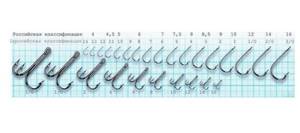
Classification of fishing hooks
The intended bait also makes adjustments to the hook size. So, for bloodworms they take a small thin hook, for a worm a little more, but in any case it will be a small hook with a straight shank from the middle price range.
Coil selection
The reel is chosen taking into account exactly how you are going to catch crucian carp. If it is just fly fishing with a float, then the simplest inertia-free or any inertial reel will be enough. When using long casts, you already need to use a better quality spinning reel. In general, float fishing for crucian carp does not place great demands on the reel.
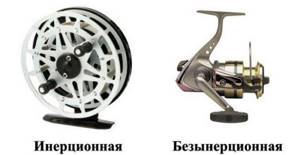
Float selection
The correct float is probably the most important element in a crucian carp rig. The fact is that crucian carp, despite its small size, also has a rather sluggish bite. Therefore, the float must be as sensitive as possible, which is achieved first by selecting the correct shape.
The optimal ones in this regard are:
- goose feather floats;

- pencil-shaped floats;
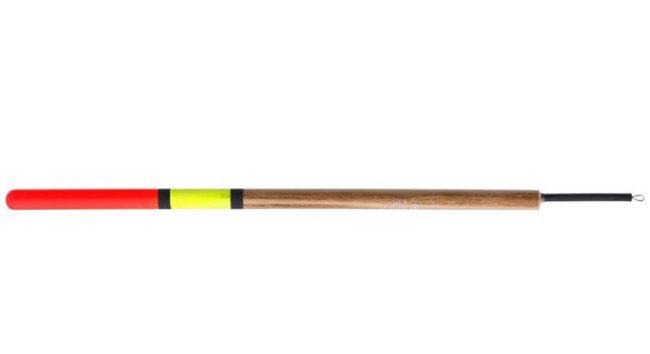
- small spindle-shaped floats with thin stems and tips.

Important! The top of the float should not be thick, otherwise when biting the crucian carp will feel resistance and spit out the bait.
The operating weight of the float, when fishing in calm weather at shallow depths, usually does not exceed 5 grams. When there is wind or fishing at depth, use floats of 5–10 grams. The heaviest ones are used for long-cast fishing.
Line selection
The fishing line is also selected depending on the size of the possible trophy, so you should focus on the range of 0.1–0.2 mm. For fishing with a fly rod for small crucian carp, a 0.1 mm fishing line is suitable. The classic size is slightly larger than the palm of your hand and weighs 250–350 grams; it is best to fish with a fishing line of 0.12–0.15 mm. A 0.2 mm fishing line will not greatly affect the bite of small fish, but it will help if a large crucian carp or small carp bites.
When fishing at depth or for long-distance casting, it is possible to use a 0.3 mm fishing line with 0.12–0.2 mm leaders.
Sinker
To load the float, use ordinary lead pellets. It is best to attach several of them, the heaviest one higher, and the lightest one closer to the hook.

Depending on its distance to the float, the sensitivity of the gear will be determined. Here you need to find a middle ground, between this very sensitivity and the caution of the crucian carp. Usually the weight is placed at a distance of 10–25 cm from the hook, depending on the bite.
Now let’s look at additional nuances and elements of equipment for crucian carp.
Stop Beads/Knots
When fishing for crucian carp by long casting, use a rig with a sliding float. To fix the immersion depth of the tackle, use a special stop bead or stop knot. They are placed on the main line and, as a rule, are made to shift. The stop bead is a small ball that easily passes through the passage rings, made of rubber or silicone with a slot or hole. They can be found in fishing stores. It sits quite tightly on the fishing line, but you can still move it along it by adjusting the depth.
A sliding knot can replace such a bead. It is knitted from fishing line, cord, woolen thread, rubber or silicone thread. When tying, use the same knots as for sliding leashes. Such a knot should move tightly along the main line.
Video: stopper knot
Two hooks
Often, experienced fishermen use a rig with two hooks when fishing for crucian carp. It is used most often when there is no reliable bite, little things are not annoying and there is a possibility that a large fish will bite. This allows you to use two different baits at once to decide on the right one.
The optimal leashes would be 10–15 cm, with the following placement options:
- one below, and the second 20–25 cm higher, between two sinkers;
- the large sinker is at the very bottom, and the leads are higher at a distance of 15–20 cm from it and from each other.
Other options, as a rule, are not so practical and lead to tangling of the gear.
Video: leash with two hooks for catching crucian carp
Mormyshka
In some cases, experienced fishermen practice catching crucian carp using a float rod with a jig. They do this when, for example, you need to fish in a very overgrown reservoir and the bait should fall into a small window in the grass without any deviations. When fishing in the reeds, here the jig, unlike the hook, will not get caught in the stems. If you need to fish at depth, a jig will provide a good sinking speed for the bait. If you need to cast some light bait further away, a jig will also help with this.
Jigs are used weighing up to 5 grams so as not to lose the sensitivity of the float. The main difference between a summer jig and a winter jig is the longer hook. Since summer baits often require larger sizes. The selection of the type of jig is usually situational and depends on the experience of the fisherman and local characteristics.
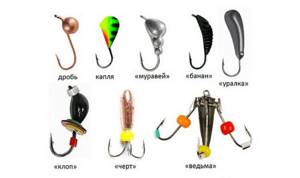
Jigs
Float
When catching crucian carp with a float rod, you should pay special attention to the choice of float. It is difficult to unequivocally answer the question of which float is better, since it depends on the conditions:
- If you fish from a boat in a body of standing water, you can get by with a light float. There is no need to make a long cast here, because you can swim close to the thickets of vegetation, but the bite will be clearly visible. When splashing down, a light two-gram float will not scare away the fish.
- For fishing in windy weather, choose a float with a low antenna.
- When fishing from the shore, a sliding float is most often used; its weight is chosen so that the tackle can be thrown to a promising point without any problems. To catch crucian carp from the shore, use 5-gram floats.
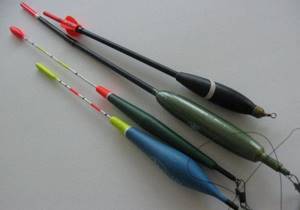
Particular attention is paid to loading the float.
To catch crucian carp, only the upper part of the antenna should remain above the water; it is also called the working part. It can be identified by its bright color. Only the tip of the antenna, painted in a contrasting color, should protrude from the water.
Usually there are numbers on the float that can easily be used to determine what weight the load should be. If two values are specified, then the first number indicates the weight of the float, and the second - the weight of the sinker. This is what we need to build on.
Another modern piece of equipment is a self-loading float with adjustable weight. There are washers on the keel of such a float, which are removed as needed.
Fishing technique
T
The fishing technique in April is characterized by a constant search for fish. You literally need to sit on the tail of a crucian carp to provoke it to bite. Feed several points at once and fish them one by one. One ball of complementary food the size of a tangerine for each attractive area will be quite enough.
On warm May days, fish begin to accumulate in their usual habitats, feeding intensively before spawning. Choose a suitable place where, in your opinion, the crucian carp is located, and point feed the area where you will cast the fishing rod. To attract fish and keep them on the bait spot, you will need 2-3 balls of bait the size of an average orange. If fishing is carried out on a small pond with a dense concentration of fish, one ball will be enough.
When the bite weakens, from time to time throw up lumps of food the size of a cherry and try to tempt the crucian carp with sandwiches - all sorts of combinations of several baits and attachments. In April, a popular combination is bloodworms + maggots; in May, worms + maggots, a combination of worms with canned corn, and steamed barley grains with maggots have proven themselves to be excellent.
Video on catching crucian carp in spring
Watch catching crucian carp in May using maggots:
Fishing for crucian carp in April using a float rod with bite alarms (bells):
Features of fishing in April
Crucian carp begin to respond to fishing tricks no earlier than mid-April. It makes no sense to try to catch crucian carp in large and deep reservoirs in April. Look for small ponds, swampy spills, drainage ditches of peat bogs and other places where warming water encourages crucian carp to become active.
On April days, fish do not stay long in one area, even the most promising one. The crucian carp bites sluggishly and pokes its nose into the bait for a long time, not daring to take it. The reason is not at all the suspicion of the April crucian carp. The fish have not yet entered into intensive feeding mode, and constant movements are associated not so much with the search for food, but with the need to warm up in cold water.
In April, morning fishing is rarely productive because after a cold night the fish need time to replenish their energy. In April, sometimes the best fishing hours come in the afternoon, when the water warms up to its maximum level.
Features of fishing in May
In May, crucian carp revive almost everywhere, expanding the angler's geography in search of promising places. The fish's appetite flares up, and it becomes easier to tempt it to bite. In warm water, odors spread much better, which gives free rein to the angler’s imagination in preparing bait mixtures and experimenting with baits.
In May, crucian carp do not move around the reservoir much. Occupying their usual areas, crucian carp feed intensively. The fisherman does not need to run along the shore, looking for circles in the water. It is enough to occupy and feed the points that worked last summer.
In May, the crucian carp returns to its typical feeding schedule: morning and evening. This does not mean that you can reel in your gear by lunchtime. Try catching crucian carp in the midday heat. During the pre-spawning period, the fish are hungry, so the daytime bite, although weakened, does not stop. Spawning of crucian carp occurs in the third ten days of May - early June. At this time, switch to catching other fish.
Hooks
The hook for catching crucian carp should be small. Based on the European classification, its size corresponds to No. 14 - 18. What hooks are needed for catching crucian carp depends on its weight.
The larger the crucian carp, the smaller the number on the packaging should be. According to the Russian classification, “five” or “seven” is suitable.
If the goal is to cut off small crucian carp, choose hooks with a short shank.
If quantity rather than quality is important, a hook with a standard shank will do. Often hooked crucian carp escapes. To prevent this from happening, choose hooks with a tip curved inward: firstly, there will be no “empty” bites, and secondly, the number of trips will be reduced.
There is an opinion that crucian carp take more readily on a black hook, but one can argue with this.
When fishing with semolina or dough, it is convenient to use hooks with springs. The bait stays on them much longer than on regular hooks.
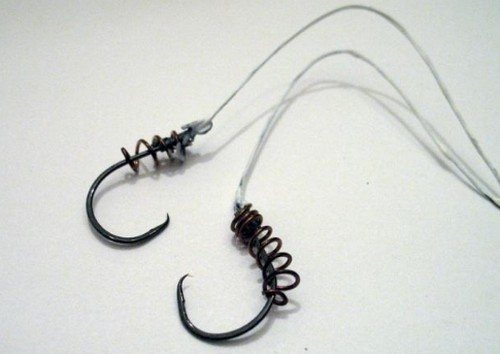
A sharp hook is more effective in hooking, so you should periodically check to see if it has become dull. When choosing a hook, what kind of bait or attachment will be used is also taken into account.
It is unlikely that you will be able to attach a bloodworm to a thick hook. In this case, they put it smaller or switch to a larger bait. In the same way, it will not be possible to put a large worm on a small hook. The color of the hook is another important detail. It is selected to match the color of the bait.
Sinker
A float fishing rod for crucian carp, the equipment of which does not involve the use of a self-loading float, is equipped with one or more sinkers. They can be pellet or olive shaped.
Depending on the type of equipment, one or another form is used; you can often see a combination of pellets and olives.

When using a sports float, pellets spaced along the line work better. Also, the choice of sinker depends on the conditions of the reservoir.
If crucian carp prefers to peck on the rise, then the smallest pellet is located almost right next to the hook. In some types of rigs, a sinker is not used at all.
Attachments and baits for crucian carp
Pearl barley in fishing is ideal for crucian carp
The choice of bait usually depends on the time of year and the type of body of water. Crucian carp is found in almost all reservoirs and its “menu” is very diverse. Their favorite baits are of animal origin. These are dung worms , bloodworms and maggots .
Dung worm , thanks to its hard skin, attaches very well to the hook. It is recommended to select young worms. Bloodworms can be used for fishing at any time of the year. It is no thicker than a matchstick in size and is a desirable food for crucian carp. We love maggots as a fish in the warm season.
In addition to baits of animal origin, you can use plant baits . This:
- wheat;
- corn;
- peas;
- pearl barley.
It is also good to use porridge :
- semolina;
- mastyrka;
- hominy;
- millet;
- bakery products.
It will be good if all this can be flavored with honey, dill or anise oil.
Some anglers like to use boilies. This is a bait rig that needs to be cooked. They are called "dumplings" for fish. There are many recipes for making them yourself. Basically, they are cooked from different types of cereals with the addition of various spices, but more often fishermen resort to using store-bought boilies.
In what cases is float gear used, and in what cases is bottom gear used?
Fishing for crucian carp can also be done using bottom gear. A feeder is very effective in this case. When fishing on a feeder, it is important to choose a good crucian bait. The food should be aromatic, the fraction should be fine.
Another type of bottom tackle for crucian carp is a spring. It takes longer to wait for a bite on a spring, but good large specimens will be caught more often than on a float rod, although the bite intensity may be lower.
Bottom tackle is more effective on long casts, especially on bodies of water with a current. For fishing in a small shallow pond, it is more convenient to use a float rod. To make it easier to make equipment for a float rod for crucian carp, we suggest watching the video.
